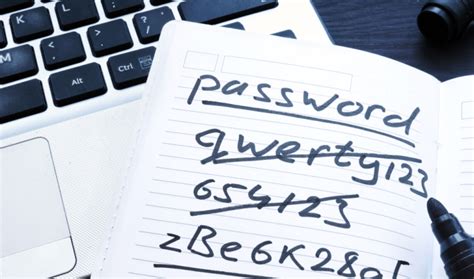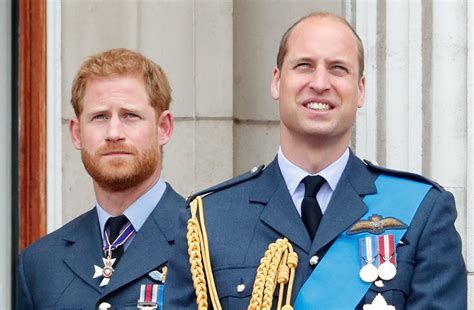
Prince William has publicly addressed the ongoing tensions with his brother, Prince Harry, stating, “That’s the past,” signaling a potential shift in the royal family’s approach to the widely reported feud. The Prince of Wales made the comment during a recent public engagement, offering a rare glimpse into his perspective on the strained relationship.
Prince William’s seemingly conciliatory remark comes after years of speculation and media coverage surrounding the rift between the two brothers. The comment, delivered in response to a direct question about Prince Harry, suggests a desire to move beyond the documented disagreements and controversies that have dominated headlines. While the full context of the exchange remains somewhat limited, the phrase “That’s the past” implies a forward-looking perspective, possibly indicating a willingness to reconcile or at least de-escalate the conflict.
The relationship between Prince William and Prince Harry has been under intense scrutiny since Harry and his wife, Meghan Markle, stepped down as senior members of the royal family in early 2020 and subsequently relocated to the United States. The couple’s departure, often referred to as “Megxit,” was followed by a series of interviews and public statements in which they openly discussed their experiences within the royal institution, including allegations of racism and a lack of support. These revelations further strained the already complex dynamic between the brothers, leading to what many observers have described as a deep and painful divide.
The tension was palpable during several public appearances following Harry and Meghan’s departure, including the funeral of Prince Philip and the coronation of King Charles III. While the brothers were seen in close proximity at these events, reports suggested that communication remained limited and strained. The publication of Prince Harry’s memoir, “Spare,” in early 2023, further exacerbated the situation. The book contained numerous personal and often critical accounts of his relationship with William, detailing arguments, resentments, and perceived injustices. These disclosures sparked widespread debate and further solidified the perception of a significant breakdown in their bond.
Despite the public acknowledgment of discord, there have been occasional signs of potential reconciliation or at least a willingness to maintain a semblance of unity. Following the death of Queen Elizabeth II in September 2022, William and Harry, along with their wives, appeared together to greet well-wishers outside Windsor Castle, a moment that offered a brief glimpse of solidarity during a time of national mourning. However, such moments have been infrequent and often overshadowed by ongoing tensions.
Prince William’s recent comment could be interpreted in several ways. It could represent a genuine desire to move past the negativity and rebuild a relationship with his brother. Alternatively, it could be a strategic effort to project an image of unity and stability within the royal family, particularly as they navigate the challenges of a changing monarchy. Royal experts note that maintaining a positive public image is crucial for the monarchy’s continued relevance and popularity, and addressing longstanding family disputes is an important part of that effort.
The impact of William’s statement remains to be seen. It is unclear whether Harry will respond publicly or whether the comment will lead to any tangible changes in their relationship. However, the fact that William has addressed the issue directly, even in such a concise manner, suggests a recognition of the need to acknowledge and potentially resolve the ongoing conflict. The future of the brothers’ relationship, and its impact on the monarchy, continues to be a subject of intense public interest and speculation.
The Context of Royal Relations and Public Image
The British monarchy has a long history of navigating complex family dynamics under the intense scrutiny of the public eye. Royal relationships, particularly those of siblings, often become fodder for media speculation and public fascination. The dynamics between heirs to the throne and their siblings have historically been fraught with tension, rivalry, and competition for attention and influence.
In the modern era, the royal family has become increasingly aware of the importance of managing its public image. The media plays a significant role in shaping public perceptions of the monarchy, and negative publicity can have a detrimental impact on its popularity and perceived legitimacy. As a result, members of the royal family are often under pressure to present a united front, even when internal disagreements exist.
The feud between William and Harry has presented a significant challenge to this image management. The brothers were once seen as incredibly close, having shared a unique bond forged by the early death of their mother, Princess Diana. Their close relationship was often highlighted in public appearances and media coverage, portraying them as a united force within the royal family. However, the events of recent years have shattered this image, revealing deep divisions and resentments.
The impact of this feud extends beyond the personal relationship between the two brothers. It has also raised questions about the future of the monarchy and its ability to adapt to changing social norms and expectations. The allegations of racism made by Harry and Meghan, in particular, have sparked a broader conversation about diversity and inclusion within the royal institution.
In this context, Prince William’s comment takes on added significance. By publicly acknowledging the past while suggesting a desire to move forward, he is attempting to address the concerns of the public and project an image of leadership and reconciliation. Whether this effort will be successful remains to be seen, but it represents a notable step in navigating a complex and sensitive situation.
The Challenges of Reconciliation
Reconciling a deeply fractured relationship, especially one that has played out so publicly, is a complex and challenging process. The path to reconciliation often involves acknowledging past hurts, taking responsibility for one’s actions, and demonstrating a genuine commitment to change. In the case of William and Harry, the challenges are compounded by the intense media scrutiny and the involvement of numerous other parties, including their respective spouses and other members of the royal family.
One of the key obstacles to reconciliation is the issue of trust. The publication of “Spare” significantly eroded trust between the brothers, as Harry’s candid and often critical accounts of their interactions were perceived as a betrayal by William. Rebuilding trust requires a willingness to engage in open and honest communication, to listen to each other’s perspectives without judgment, and to demonstrate a consistent pattern of reliability and support.
Another challenge is managing the expectations of the public and the media. The intense interest in the brothers’ relationship means that any attempt at reconciliation will be closely scrutinized and analyzed. This can create additional pressure and make it more difficult for them to navigate their personal relationship without external interference.
Despite these challenges, reconciliation is not impossible. Experts in conflict resolution suggest that focusing on shared values and goals can be a helpful starting point. In the case of William and Harry, their shared commitment to their mother’s legacy and their dedication to public service could provide a foundation for rebuilding their bond. Additionally, seeking professional guidance from therapists or mediators could provide them with tools and strategies for navigating their complex emotions and communicating more effectively.
Ultimately, the success of any reconciliation effort will depend on the willingness of both brothers to engage in the process with sincerity, humility, and a genuine desire to heal their relationship. Prince William’s recent comment may be a tentative step in that direction, but much more work remains to be done.
The Future of the Monarchy
The ongoing rift between Prince William and Prince Harry has implications for the future of the British monarchy. The monarchy’s strength and stability depend, in part, on its ability to project an image of unity and continuity. The public display of discord between two of its most prominent members undermines this image and raises questions about the institution’s ability to adapt to modern challenges.
King Charles III is acutely aware of these challenges and has made efforts to address them since ascending to the throne. He has sought to streamline the monarchy, reducing the number of working royals and focusing on key priorities such as environmental sustainability and charitable work. He has also emphasized the importance of inclusivity and diversity, recognizing the need for the monarchy to reflect the changing demographics of the United Kingdom.
The relationship between William and Harry is just one piece of this larger puzzle. Resolving their differences could help to restore public confidence in the monarchy and strengthen its position for the future. However, failure to do so could further erode public trust and accelerate the calls for reform.
The monarchy’s ability to navigate these challenges will depend on its willingness to adapt to changing social norms and expectations, to address concerns about diversity and inclusion, and to demonstrate a genuine commitment to serving the public good. The future of the monarchy is not guaranteed, but with strong leadership and a willingness to embrace change, it can continue to play a meaningful role in British society for generations to come.
Public Reaction and Media Coverage
Prince William’s comment has generated widespread reaction across social media platforms and traditional news outlets. Many people have expressed hope that this signals a genuine desire for reconciliation between the brothers. Others remain skeptical, pointing to the deep-seated resentments that have been publicly aired over the past few years.
Media coverage has been extensive, with news outlets analyzing the comment from various angles. Some have highlighted the potential for a positive turning point in the relationship, while others have cautioned against reading too much into a brief and ambiguous statement. Royal commentators and experts have offered their perspectives, providing historical context and analyzing the potential implications for the monarchy.
The public’s reaction to William’s statement reflects a wide range of emotions and opinions. Some people feel empathy for both brothers, recognizing the challenges of navigating family relationships under intense public scrutiny. Others feel frustrated by the ongoing drama and wish for a resolution that would allow the royal family to move forward.
The media’s role in shaping public perception of the royal family is undeniable. The constant coverage of the feud between William and Harry has amplified the tensions and contributed to the public’s fascination with their relationship. Whether this coverage will ultimately help or hinder the reconciliation process remains to be seen.
Potential Outcomes and Future Scenarios
The future of the relationship between Prince William and Prince Harry remains uncertain. Several potential outcomes are possible, ranging from a complete reconciliation to a continued state of estrangement.
One potential outcome is a gradual rebuilding of trust and communication. This could involve private meetings between the brothers, facilitated by therapists or mediators, to address their grievances and work towards a common understanding. Over time, this could lead to a more public reconciliation, with the brothers appearing together at official events and demonstrating a renewed sense of unity.
Another possibility is a partial reconciliation, where the brothers maintain a civil but distant relationship. This could involve limited communication and occasional public appearances together, but without a deep level of trust or intimacy. This scenario would allow the royal family to project an image of unity without requiring the brothers to fully resolve their differences.
A third possibility is a continuation of the current state of estrangement. This could involve limited or no communication between the brothers, with their relationship remaining strained and distant. This scenario would likely continue to generate negative publicity for the royal family and could further erode public trust.
Ultimately, the outcome will depend on the willingness of both brothers to engage in the reconciliation process and their ability to overcome the obstacles that stand in their way. Prince William’s recent comment may be a small step in the right direction, but much more work remains to be done.
FAQ Section
1. What exactly did Prince William say about Prince Harry?
Prince William, when asked about Prince Harry, stated, “That’s the past.” This comment was made during a public appearance and is interpreted as a possible indication of a desire to move beyond the ongoing feud between the brothers. The brevity of the statement leaves room for interpretation, but it suggests a forward-looking perspective.
2. Why is there a feud between Prince William and Prince Harry?
The feud is believed to stem from several factors, including Prince Harry’s decision to step down as a senior royal and relocate to the United States with his wife, Meghan Markle. The couple’s subsequent interviews and Prince Harry’s memoir, “Spare,” detailed their experiences within the royal family, including allegations of racism and a lack of support, which further strained the relationship with Prince William. Different paths and values have also been reported as contributing factors.
3. Has there been any attempt at reconciliation between the brothers?
There have been occasional signs of potential reconciliation or a willingness to maintain a semblance of unity. Following the death of Queen Elizabeth II, William and Harry, along with their wives, appeared together to greet well-wishers outside Windsor Castle. However, these moments have been infrequent and often overshadowed by ongoing tensions and public statements.
4. How has the public reacted to the feud between William and Harry?
The public reaction has been varied, ranging from empathy and sadness to frustration and disappointment. Some people hope for a reconciliation and a return to the close bond the brothers once shared. Others are skeptical, given the depth of the public disagreements and the revelations in Prince Harry’s memoir. Media coverage has amplified these emotions and contributed to the ongoing public interest in the brothers’ relationship.
5. What impact does the feud have on the future of the monarchy?
The feud presents a challenge to the monarchy’s image of unity and stability. Public discord between prominent members of the royal family can erode public trust and raise questions about the institution’s ability to adapt to modern challenges. King Charles III is aware of these challenges and is working to streamline the monarchy and address concerns about diversity and inclusion. The resolution of the feud between William and Harry could help restore public confidence in the monarchy, while a continued state of estrangement could further undermine its position.
Elaborated Analysis and Expanded Context:
The simple utterance from Prince William, “That’s the past,” carries an extraordinary weight, resonating far beyond its literal meaning. It’s not merely a dismissal of prior disagreements; it’s a carefully chosen phrase laden with strategic implications, deeply interwoven with the dynamics of the royal family, its public image, and the very future of the British monarchy.
To dissect the significance of this statement, it’s essential to understand the historical context that underpins the brothers’ relationship and the seismic events that led to their estrangement. Prior to “Megxit,” William and Harry epitomized a powerful image of brotherly camaraderie. The loss of their mother, Princess Diana, at a young age forged an undeniable bond, making them confidantes, partners in philanthropic endeavors, and visible pillars of support for the Crown. This unity projected an image of stability, especially during periods of transition, solidifying public trust in the institution.
However, the fairy-tale narrative began to unravel with Harry’s marriage to Meghan Markle. Her entry into the royal family was met with initial optimism, but soon, tensions began to surface. Reports emerged of Meghan struggling to adapt to the rigid protocols and traditions of royal life. Furthermore, allegations of racism within the institution created a firestorm of controversy, casting a shadow over the monarchy’s reputation.
The decision by Harry and Meghan to step down as senior royals and forge a new life in the United States, driven by a desire for greater autonomy and protection from what they perceived as relentless media intrusion and lack of support, was a watershed moment. “Megxit” exposed fissures within the royal family, initiating a period of intense media speculation and public debate. Their departure, though seemingly a personal decision, had profound ramifications for the monarchy’s structure and its standing in the 21st century.
The highly publicized interviews given by Harry and Meghan to Oprah Winfrey further intensified the crisis. They made startling revelations, including accusations of racist comments regarding their son Archie’s skin tone and a lack of mental health support for Meghan during her struggles with suicidal thoughts. These claims sent shockwaves through the royal family and prompted a global reckoning with issues of race, privilege, and mental health within the monarchy.
The publication of Prince Harry’s memoir, “Spare,” served as another catalyst, laying bare the raw emotions, resentments, and personal details of his life, including his strained relationship with his brother William. The book recounted numerous arguments and moments of discord, offering a stark contrast to the previously cultivated image of brotherly love and unity. The level of detail and personal vulnerability shared in the memoir, while offering a deeper understanding of Harry’s perspective, also inflicted further damage on the already fragile relationship between the two brothers.
In this charged atmosphere, Prince William’s terse statement, “That’s the past,” assumes a complex, multi-layered significance. It can be interpreted in several ways, each carrying a different weight and implication.
Firstly, it could be a declaration of a conscious decision to move forward, attempting to draw a line under the past controversies. In essence, it might represent a recognition that dwelling on the past hurts and recriminations only serves to perpetuate the rift. By acknowledging the past as something concluded, William may be attempting to initiate a process of healing, or at least de-escalation.
Secondly, it could be a strategic maneuver aimed at managing the royal family’s public image. The monarchy has always been keenly aware of the power of public perception, and the ongoing feud between William and Harry has presented a serious challenge to its reputation. By suggesting that the past is behind them, William may be attempting to project an image of unity and stability, reassuring the public that the royal family is capable of overcoming internal challenges and moving forward with its duties.
Thirdly, the statement could be a protective response to the ongoing media scrutiny and public attention. The constant probing into the brothers’ relationship and the relentless dissection of every interaction can be exhausting and intrusive. By offering a concise and seemingly definitive statement, William may be trying to limit further speculation and protect his family from unwanted media attention.
However, the effectiveness of this statement hinges on several factors, including Prince Harry’s response, the underlying realities of their relationship, and the capacity for genuine reconciliation. While William’s words could be a genuine invitation to heal, they must be supported by actions that demonstrate a sincere commitment to rebuilding trust and fostering a healthier dynamic.
The potential for genuine reconciliation remains a complex and uncertain prospect. Years of accumulated grievances, public pronouncements, and deeply ingrained resentments cannot be easily erased with a single statement. Rebuilding trust requires open and honest communication, a willingness to acknowledge past hurts, and a mutual commitment to forgive and move forward.
Given the global attention and intricate dynamics, the role of external factors cannot be ignored. Media scrutiny, public opinion, and the influence of other family members can all impact the brothers’ ability to reconcile. It requires a delicate balance to navigate these pressures while attempting to forge a renewed connection.
The future of the monarchy could be indirectly influenced by the evolving relationship between Prince William and Prince Harry. The strength and stability of the monarchy partly relies on its image of unity, which has been fractured by the visible discord. A successful reconciliation could help restore public trust and reinforce the institution’s position. Conversely, a continued estrangement could perpetuate doubts and accelerate calls for reform.
In conclusion, Prince William’s statement is not merely a dismissive remark; it is a complex and carefully considered utterance that holds considerable strategic weight. While it might signify a desire to move forward and project an image of unity, its true impact will depend on the actions and reactions of all parties involved. The road to reconciliation, if pursued, will likely be long and challenging, but the potential rewards for the royal family and the future of the monarchy could be significant.









